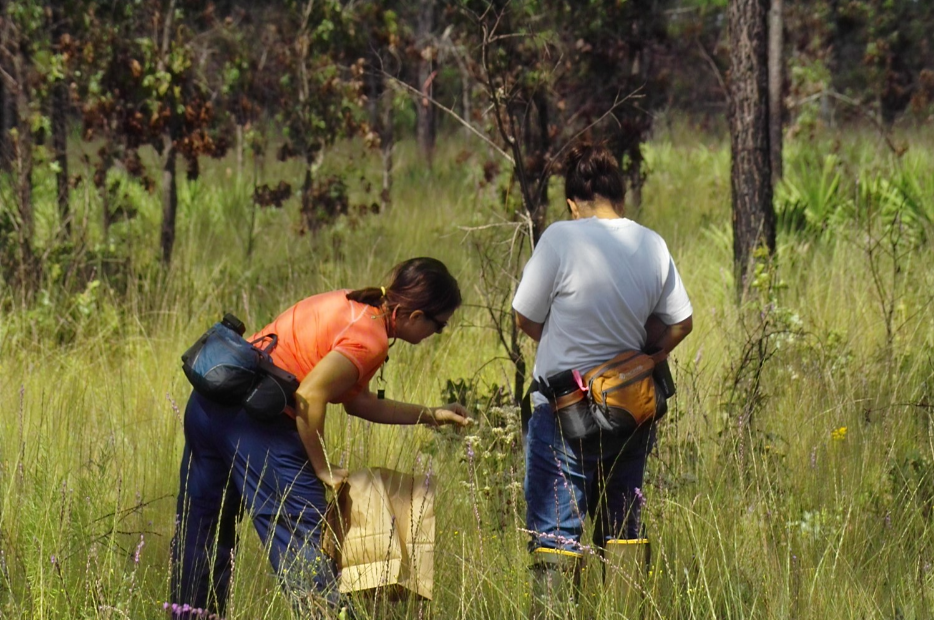Researchers at the University of Wisconsin and Iowa University recently completed a landmark study in ecosystem restoration. Monitoring 100 seed restoration sites across the southeast U.S. for more than a decade, they demonstrated reseeding damaged pine savannah one time ensures long-term restoration.
Many of the 28 million seeds the researchers planted grew and continued to thrive on the research sites. The site plantings reestablished the damaged pine savannah ecosystem in a low-cost and one-time process, Iowa State biology professor Lars Ludvig said.
UW Department of Integrative Biology professors Ellen Damschen and John Orrock led the study, along with Ludvig.
City of Madison to comply with first ever national PFAS regulations on drinking water
Orrock said the study encompassed the southeast US — Georgia, South Carolina, North Carolina and three geographical zones. Researchers planted 28 million seeds in total, across 100 sites. Collaborative efforts between the research team, the U.S. Forest service, two military stations and both undergraduate and graduate students made the study possible.
“Doing a study on this scale allowed us to yield results that can be used across multiple forests and climates,” Orrock said. “By seeding multiple sites in every state, we were able to track the effects of environmental factors such as rainfall and temperature on the growth of plants.”
Only 5% of the original pine savannah remains. Pine savannah consists of pine trees surrounded by grassland undergrowth, Orrock said. The grasses evolved to withstand drought and extreme weather by storing water and nutrients in their roots.
The research plots were all in forest that was once pine savannah before farmers converted the area to farmland, Orrock said. As settlers developed agricultural land in the south, they cut down pine trees and plowed up the grasses beneath them to clear the land for farming. As time passed and the farming industry changed, residents subsequently replanted a lot of pine trees and left the land alone.
Many of the trees have been replanted and the land converted back to forests, but the native ground cover plants haven’t returned without human assistance, Orrock said.
Researchers also examined plant establishment, which happens when a plant reseeds itself and regrows year after year, Orrock said. Determining whether reseeding is enough to reestablish the savannah depends on whether seeded plots could withstand temperature and rainfall fluctuations.
Before farmers plowed the savannah, its plants grew and produced seeds that would replace them during the next growing season. Once the land was plowed and planted with crops, the seeds disappeared with the original ground cover plants, Ludvig said.
“Seeds don’t always travel on their own,” Orrock said. “Sometimes just because you don’t see a plant somewhere, it isn’t because the plant can’t grow there. It just hasn’t been put there.”
In the Midwest, restoration companies farm native plants for restoration projects, so researchers have easy access to native seeds. But native seed farms are virtually nonexistent in the southeast, so the research team had to collect seeds from undisturbed wild areas, Ludvig said.
Collecting seeds to plant in the pine forests was a challenge, Orrock said. Researchers collected seeds from unplowed land and what remained of the original savannah. In a time and labor-intensive project, researchers collected 28 million seeds from over 20, all species by hand.
Once the plants germinated in 2013, they self-seeded year after year and showed high rates of establishment, Ludvig said.
“[The seeds] hung out as seeds in the soil for a couple years,” Ludvig said. “We’re not exactly sure what finally caused them to germinate, but it was possibly the higher rainfall that year.”
The established plants have since grown and reseeded themselves without human help. Unlike some restoration projects that need intensive monitoring and care throughout the years, Ludvig said the savannah restoration only needed one planting to restore most of its biodiversity.
Most of the sites are flourishing 10 years later, Orrock said.
The savannah plants regrow every year because they evolved to withstand climate variation. They have long roots that store water during dry periods, Orrock said. The root system can also regrow the above-ground plants if they are destroyed by fire or high temperatures.
Because the single reseeding restored savannah species in 100 plots, landowners can be confident that restoring their savannah requires one seeding, Orrock said. This finding is significant because while much of the southern pine trees have grown back, the original biodiversity was mostly from ground level savannah grasses and other plants.
Land and ecosystem restoration is time-intensive and expensive. According to Orrock, restoration projects usually require entirely clearing an area of trees and weeds. The low-cost nature of a single reseeding and the regrown pine forests makes restoration far more accessible to southern landowners.
The scale and high degree of measurements sets this study apart from other environmental studies, Orrock said. Historically, environmental studies have been focused on a single plot of land or area, due to the expense and labor required for larger studies. That type of study leads to results that may only be applicable to the few areas that have the same environmental conditions as the study site.
The decade-long study is part of the movement among ecologists towards large-scale studies and away from single-location studies.
When the pine savannah study began, it was part of a push among environmental scientists to do more large-scale studies, Orrock said. The more data collected in each study, the more tools ecologists have to evaluate large and small scale environmental problems or opportunities such as restoration projects.
With the success of this study and its methods, more large scale studies should occur in the future, Orrock said.
“There’s no owner’s manual for the planet,” Orrock said. “We’re trying to figure out pages in the owner’s manual, one experiment at a time.”


















